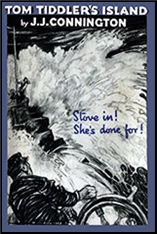Wed 21 Mar 2018
Archived Review: E. C. R. LORAC – Shepherd’s Crook.
Posted by Steve under Authors , Reviews[8] Comments
E. C. R. LORAC – Shepherd’s Crook. Inspector Robert Macdonald #38. Doubleday Crime Club, US, hardcover, 1953. First published in the UK as Crook o’ Lune (Collins Crime Club, hardcover, 1953).
Inspector Macdonald of Scotland Yard is thinking of retirement, getting away from the crowded bustle of London and starting a farm, so while on leave he heads for Lancashire sheep country — and instead of rustic quiet, finds yet another mystery on his hands.
The death of an elderly housekeeper in a fire, while not intended, may be due to the work of sheep thieves, or it may be a matter of a will that dates from 1690. The pace may be slow, but the place setting is aptly described, and every word is there to be savored.
[UPDATE.] I don’t remember how Macdonald’s proposed retirement worked out in the book itself, but in the real world, he had eight additional recorded case to follow this one. His career began with The Murder on the Burrows in 1931, and came to a close with Dishonour Among Thieves aka The Last Escape in 1959.
Lorac’s books are becoming scarce. I found only one copy of the US edition on abebooks.com just now, for example, the asking price for that one being a mere $99.95. Three copies of the British edition are offered there, however, including one in fair condition for $36.06.
Although not yet this one, some of Lorac’s novels have recently been reprinted, first by by Ramble House and then more recently by British Library Crime Classics. Hopefully there will be enough interest to warrant more to come.
For as much as is known about Lorac herself, her real name Edith Caroline Rivett, (1894-1958), check out Curtis Evans’ Passing Tramp blog here: http://thepassingtramp.blogspot.com/2017/09/edith-caroline-rivett-1894-1958-aka-ecr.html
